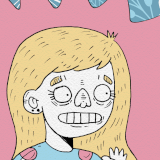
The body is equipped with innate tools meant to keep us safe. One of the most well-known (and essential) is the fight or flight response. This response system is designed to send signals to the body and brain when danger is perceived. For example, if a predator was encountered in the wild, the body’s fight or flight response would kick into action, signal danger, and make it easier for a person to run without having to ruminate about what to do.
Unfortunately, the fight or flight system tends to misfire (more often for some than others), which can cause anxiety and the associated symptom of restlessness.
How Anxiety Causes Constant Restlessness
Restlessness is one of the more commonly reported symptoms of anxiety. Restlessness is when it is difficult to sit still, rest, or relax. Restlessness can cause a person to feel fatigued, have trouble concentrating, or feel as though his or her mind is “going blank.” It also frequently manifests in ways such as feeling tense or agitated. Restlessness can affect a person’s ability to sleep, function properly at work and/or school, and detract from overall wellbeing.
Restlessness, like many other symptoms of anxiety, is a direct result of the fight or flight response being activated. When a person goes into fight or flight mode, his or her body receives a surge of adrenaline. Adrenaline has often been referred to as “nature's energy,” and is a response to stress.
A Faulty System
For some people, the fight or flight system can be faulty. Sometimes, the fight or flight response misfires, or is activated when there is no actual danger. This often occurs in people who have past trauma or have experienced long periods of intense stress (although for some people, anxiety may be genetic or have no easily apparent cause).
This trauma or periods of heightened stress cause the body to be conditioned to experience fight or flight mode - where their stress response is essentially stuck in the “on” position.
This means the nervous system can go into overdrive during mundane times. And because there is no actual danger (and thus nothing to run from or protect from), all of the adrenaline flooding the body has nowhere to go or no way to be expended. This unnecessary adrenaline can cause physical discomfort, including feelings of restlessness.
Other Causes of Anxiety Related Restlessness
Adrenaline is not the only cause of restlessness. Restlessness may also be triggered by a person’s thoughts. These are often thoughts of needing to change something, or thoughts that something in one’s life is off or “wrong.” This can cause a type of mental restlessness that makes it difficult to relax.
How to Treat Constant Restlessness
For those who experience restlessness as a result of anxiety, there are strategies to use to help manage the discomfort. One of the quickest ways to relieve some of that adrenaline is to get moving and burn it away. Go for a run. Do some jumping jacks; it will burn up the excess adrenaline.
Other things that can be helpful to restlessness and anxiety in general are:
- Meditation - Meditation can help quiet the mind, calm and ground a person, and provide an opportunity to be mindful (aware) of one’s thoughts, feelings, and bodily sensations. This practice in mindfulness can help manage restlessness, and overall become less vulnerable to restlessness.
- Breathing Exercises - There are many different breathing exercises suggested for those with anxiety and restlessness. Some of the most popular are deep breathing practices, counting breaths, and meditation breathing.
- Visualization - Visualization is a great tool for anxiety and restlessness. Visualization is the act of envisioning or imagining oneself in a peaceful, serene, and safe environment. Mentally “transporting” to this place serves as a great distraction, and allows for the mind and body to gain a sense of calm.
- Progressive Muscle Relaxation - Progressive muscle relaxations are thought to help with anxiety and restlessness, as muscle tension is a bodily response to stress. While there are many different progressive muscle relaxation practices, they all aim to teach a person to systematically relax his or her muscles (one muscle group at a time).
- Exercise - Exercise is part of an overall healthy lifestyle, and a recommended approach to managing many mental health concerns. For anxiety-related restlessness (and those constantly in fight or flight mode), daily exercise can provide an effective energy release, and promote better sleep.
In general, the goal is going to learn how to manage your anxiety prevent it from controlling your life. Anxiety is treatable, and thus so is anxiety-related restlessness. Whether through therapy, medication, or self-help, there are opportunities out there to decrease your anxiety symptoms and be more comfortable in your day to day activities.












